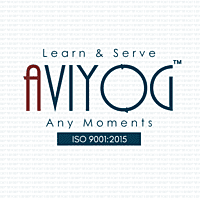Ardha Uttanasana | Standing half forward bend
Half Standing Forward Fold — Ardha Uttanasana (ARD-uh ooh-tuhn-AHS-uh-nuh) — stretches and rejuvenates the spine and legs. This pose is an essential element of Sun Salutations and helps to prepare the body for deeper yoga poses.
It is commonly referred to as "Half Standing Forward Fold" or "Half Forward Bend." However, the literal translation of its Sanskrit name is, "half intense stretch pose." This comes from four Sanskrit words:
- "Ardha" — meaning "half"
- "Ut" — meaning "intense"
- "Tan" — meaning "to stretch"
- "Asana" — meaning "pose"
Though the name sounds "intense," be sure to keep the pose relaxing and comfortable! Your body will lengthen and strengthen with time and practice, so don’t overdo it by pushing too hard. You’ll get a deeper stretch if you relax more in the pose.
Ardha Uttanasana can be a great way to stretch out your spine and legs throughout the day. Keep the following information in mind when practicing this pose:
- Emphasize lengthening the front of your torso, instead of bringing your hands all the way to the floor. Bend your knees as much as you need to, or place your hands on your shins, yoga blocks, a chair, or against the wall to keep this length.
- Extend the crown of your head forward as you reach your tailbone behind you. Work to create as much space between your belly button and tailbone as you can.
- Be sure to fold from the hips, not the waist. To learn this movement, place your hands directly on your front hip bones. Press your hands into your front hip bones and hinge from that spot, keeping your torso long.
- Aim for aligning your ankles, knees, and hips. It’s common to lean back, placing too much weight on the heels. Practice the pose with your back against a wall to learn the correct weight distribution. ↑
Precaution of ardha uttanasana
- Those with back injuries should practice this pose with their hands resting on the back of a chair or against a wall. Keep the knees slightly bent. If you have a neck injury, keep your head down — do not lift it to gaze forward. Always work within your own range of limits and abilities. If you have any medical concerns, talk with your doctor before practicing yoga.
- Ardha Uttanasana is a relaxing stretch when practiced correctly. Remember to take it slowly and be careful not to push yourself too hard. Try these changes to find a variation of the pose that works for you:
- If your hamstrings or low back are tight, bend your knees.
- If you can’t easily touch the mat with your knees straight, place your hands on your shins. You can also press each hand on yoga blocks set to the outside of each foot.
- To learn the movement of keeping your back flat, place your hands on the back of a chair. You can also press your palms against a wall, just above waist level. Walk your feet back, bending at the hips, until your torso is parallel to the ground. Your body should form the shape of an upside down "L".
- If you’re practicing with a wall and can’t keep your back flat, walk your hands higher up the wall until your spine is straight.
- If you’re having trouble balancing, stand with your feet hip-distance apart or wider.
- If you have sciatica, stand with your feet hip-distance apart or wider, with your toes turned inward and heels turned outward.
- Women who are pregnant should stand with their feet as wide as necessary to feel stable. Only fold forward as deeply as it is comfortable for your stage in pregnancy and be careful not to compress the belly.
- To deepen the stretch at the back of the legs, elevate the balls of your feet by placing them on your folded mat, towel, or firm blanket.
- For more of a challenge strengthening the back, extend your arms directly forward, with your elbows alongside your ears. ↑
Procedure of ardha uttanasana
- Begin in Standing Forward Fold (Uttanasana), with your hands or fingertips on the floor at the side of each foot. You can also rest your hands on your shins, or press your palms into yoga blocks at the sides of your feet.
- Inhale as you raise the front of your torso away from your thighs, straightening your elbows.
- Lift your collarbones and sternum away from the floor. Reach the crown of your head forward and your tailbone behind you. You can bend your knees slightly to help straighten the torso and spine.
- Press your fingertips or palms into the floor, to help lift and straighten your torso.
- Lift your head slightly and gaze forward without compressing the neck. Your torso should be straight. If your back rounds, bend your knees or place your hands higher until your spine is straight.
- Engage your quadriceps (the front thigh muscles) and draw them up toward the ceiling. Do not lock your knees; keep them slightly bent.
- Bring your weight to the balls of your feet. Keep your hips aligned over your ankles.
- Slightly lift and lengthen your torso with each inhalation.
- Hold the pose for up to one minute. Exhale as you release into Uttanasana. Repeat 5-10 times. Those practicing Sun Salutations should move directly from Ardha Uttanasana into Low Lunge, Plank, or Chaturanga. ↑
Benefits of ardha uttanasana
Ardha Uttanasana stretches and lengthens your hamstrings, calves, and front and back torso. It also strengthens the back and spine, improving posture. Practicing this pose stimulates the abdominal organs and belly, improving digestion. As part of the Sun Salutation sequence, this pose also helps to teach the linking of breath with movement — an action that soothes and calms the mind. ↑



